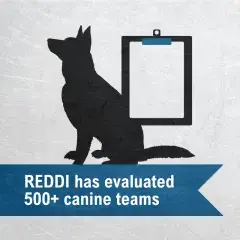The Science and Technology Directorate (S&T) enhances preparedness across communities at the local, state, territorial, and tribal levels by supporting federal homeland security Component agencies, public safety officials, and first responders on a national scale. S&T’s preparedness efforts include delivering technology solutions that provide on-the-job protection for front line operators, curating training courses and guidance documents to support decision making, and funding innovation that helps us prepare for the challenges of today and the threats of tomorrow.
The following are some of the current preparedness efforts across S&T.
Natural Disasters: Fires and Floods
- The C-THRU Real-Time Indoor Visualization System is mounted to a firefighter’s helmet to provide personal navigation in dark, smoky environments and help them find a safe exit when visibility is low.
- Deep Learning for Dam Maintenance will use artificial intelligence trained to differentiate between images with and without various types of structural deterioration, helping ensure critical infrastructure resilience.
Image

- Internet of Things Low-Cost Flood Inundation Sensors rapidly measure rising water levels and report flood conditions, providing early warning to communities that could greatly reduce potential casualties and damage.
- Next Generation Flood and Wildfire Alerting Technology provides life-saving critical emergency alerts to people in affected areas on their mobile devices and vehicle infotainment systems so they can take appropriate action.
- Next Generation Firefighter Helmet will provide light weight, but powerful and reliable protection from both fire and ballistics while also reducing the risk of blunt head trauma and neck injuries.
- Wildland Fire Sensors identify particulates and air quality conditions that signal the risk of ignition, providing early warning to communities before a wildfire becomes out of control.
- The Wildland Firefighter Respirator is small, lightweight, easy to don and doff, and most importantly, will remove airborne hazards from the air firefighters breathe.
Natural Disasters: Climate Change and Extreme Weather
- Civic Innovation Challenge is turning science and research into action to build community resilience in the face of climate change by funding innovative projects that address extreme weather challenges.
Image

- Clean Power for Hours Prize Challenge is crowdsourcing easy-to-use, affordable back-up power solutions that will help critical facilities continue to operate during electrical outages.
- Electromagnetic Pulse (EMP) Shielding Mitigations Best Practice guidance summarizes recommendations that critical infrastructure owners and operators can take to protect the electrical grid and other assets against the disrupting and damaging effects of an EMP event.
- H2Rescue is a hydrogen fuel cell-powered emergency truck that can provide zero-emission back-up power at a disaster site for responders and civilians.
- Search and Rescue Common Operating Platform (SARCOP) is an interagency dashboard designed to assist agency leadership with planning and conducting more effective and efficient operations to find missing people sooner.
- The 2023 Technology Centers Research Agenda provides the strategic framework against which S&T aligns and focuses its research portfolio, communicating priorities and objectives—including readying the nation to respond to and recover from disasters and combat the climate crisis.
Manmade Emergencies: Improvised Explosive Devices and Other Attacks
- The Explosives Planning and Research Tool (ExPRT) is a comprehensive research library of completed and ongoing studies, technical information, reports on screening and mitigation technologies, and relevant contact information to help boost the collective effectiveness of the explosives response community.
- First Aid for Severe Trauma (FAST) course teaches high school students how to potentially save a life by properly placing a tourniquet during a bleeding emergency.
- Homeland Explosive Consequence and Threat (HExCAT) rapidly analyzes the human health consequences from an explosion, the current medical ability to respond, and various mitigation and response strategies emergency planners can use.
Image

- Regional Explosive Detection Dog Initiative (REDDI) provides regionally-based training events featuring classroom instruction and exercises to improve effectiveness and efficiency of canine teams so they can better protect the public from a potential improvised explosive device.
- Special Event Planning Tools (SEPT) aid soft target risk assessment and mitigation by identifying critical assets, defining threats, and recommending effective countermeasures that event planners can take to prevent tragedies at large public gatherings.
- Urban Security Initiative is a portfolio of collaborative projects with the City of New York to help protect high-density urban areas and transit systems from chemical and biological threats by developing aerosol detection technologies.
S&T’s National Laboratories, Technology Centers, Centers of Excellence, Federally Funded Research and Development Centers, and various mission-based Research and Development Portfolios all play a role in helping our nation maintain a readiness posture for disasters—be it natural or manmade.
From identifying a flood in the South or a wildfire out West, to building critical infrastructure resilience in the Arctic Region, or preparing for a less concrete, but very real threat such as adversarial artificial intelligence, S&T is always preparing.
Learn more by following us @DHSSciTech.
